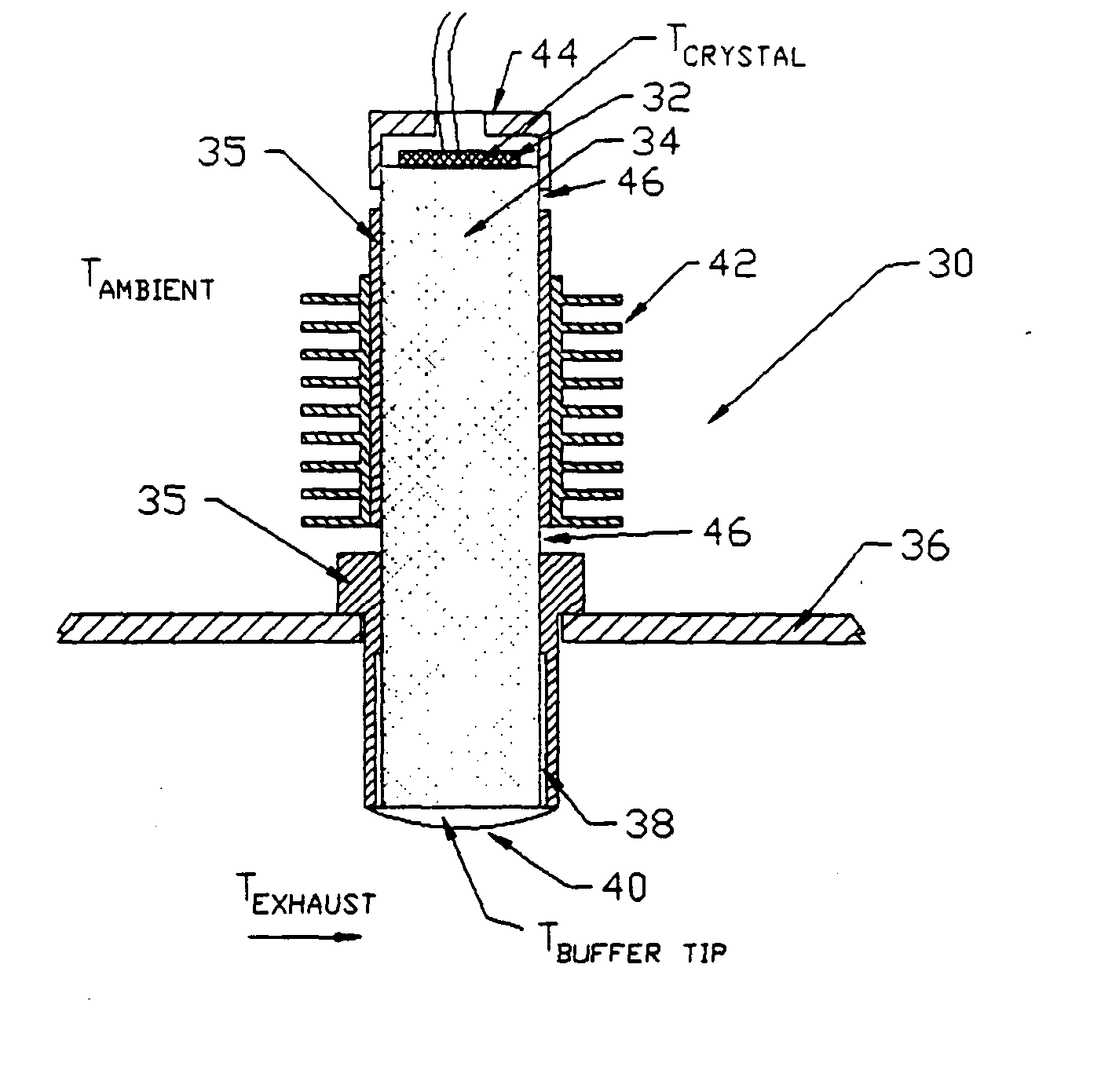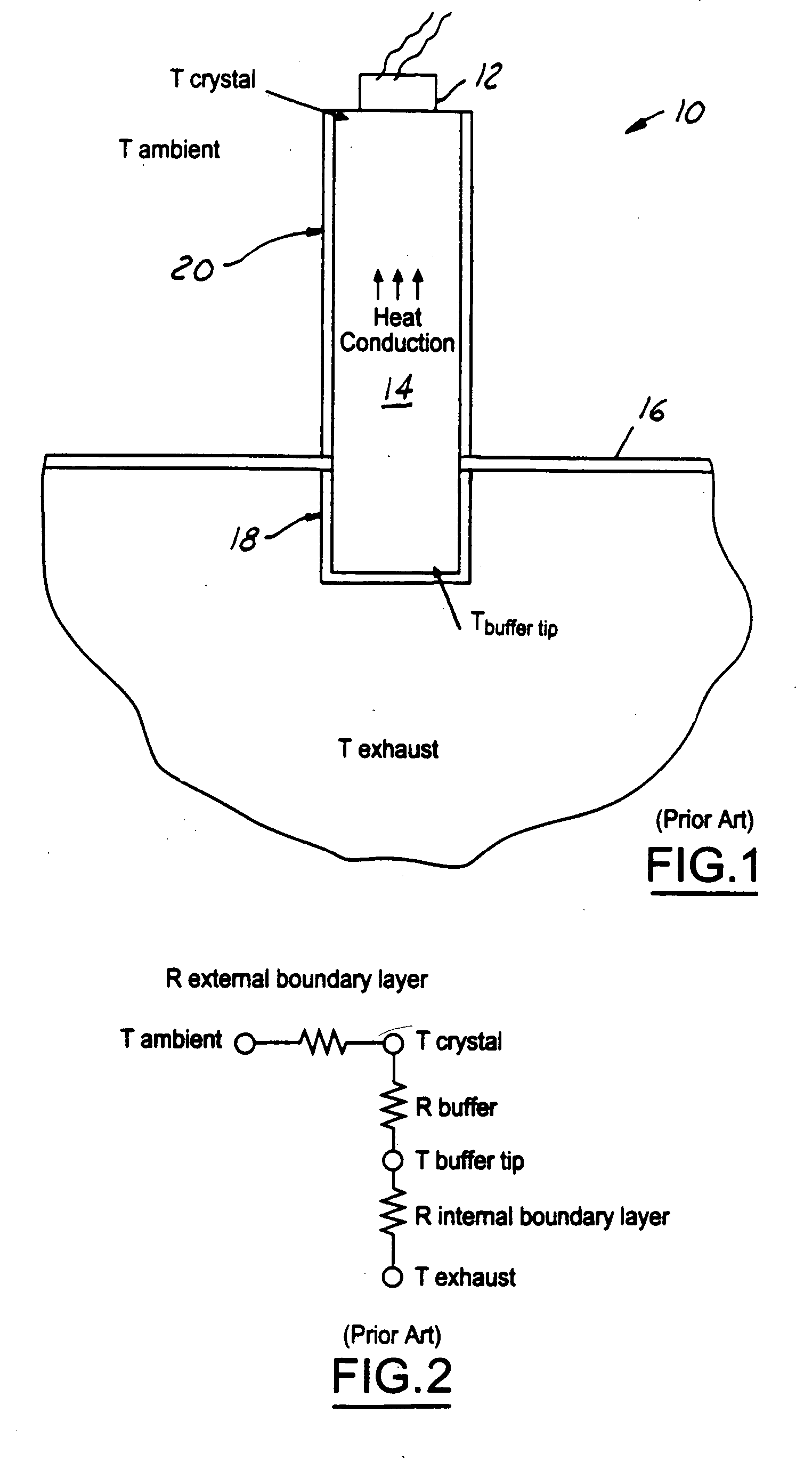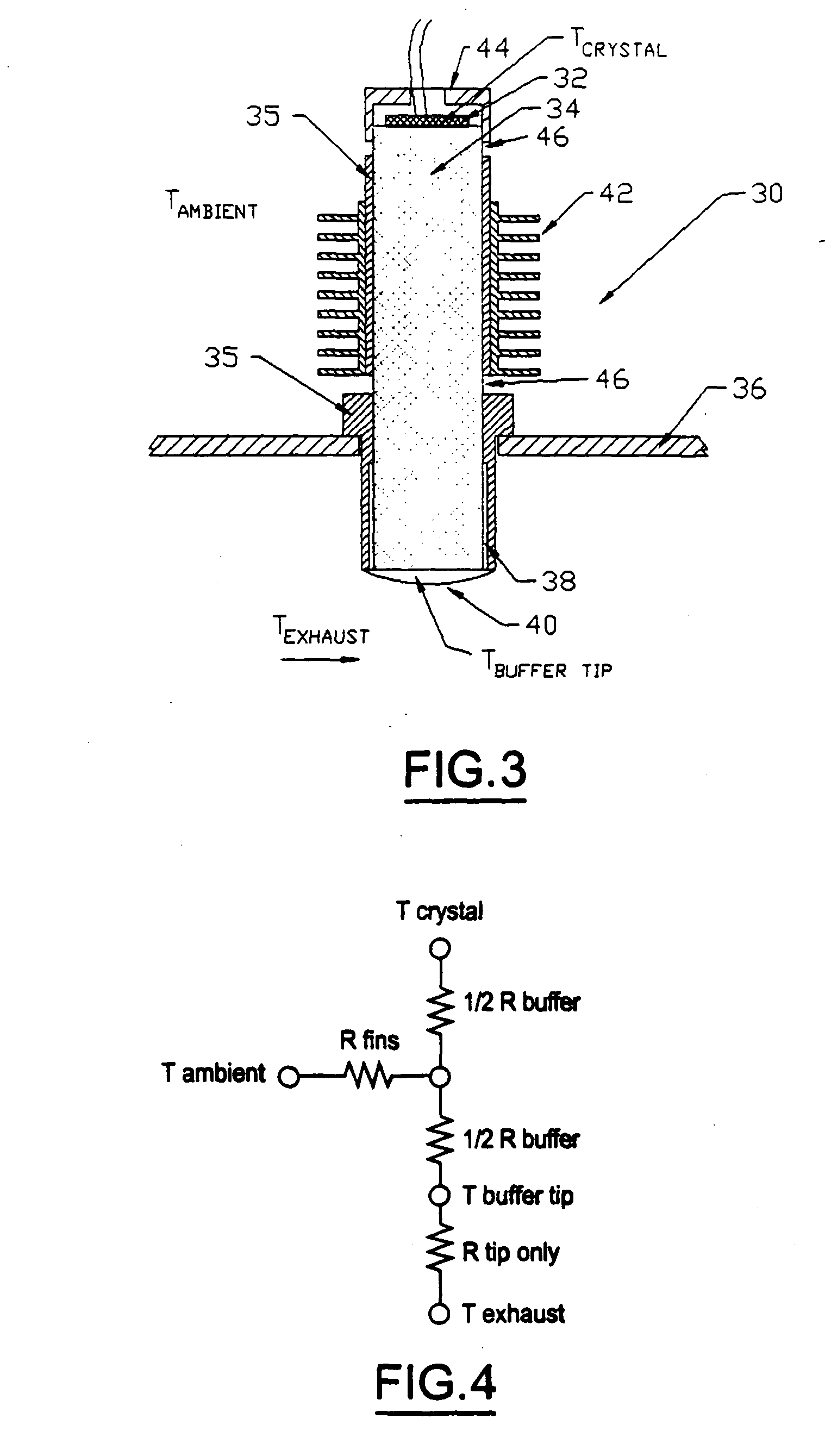Acoustic transducer
- Summary
- Abstract
- Description
- Claims
- Application Information
AI Technical Summary
Benefits of technology
Problems solved by technology
Method used
Image
Examples
Embodiment Construction
FIG. 3 illustrates an acoustic transducer 30 for measuring a property of a fluid. Transducer 30 includes piezoelectric element 32, and a buffer assembly composed of a core 34 and a sleeve 35. Sleeve 35 is shrink fitted over core 34 to form a cladding that reduces dispersion of the acoustic pulses traveling through core 34. The buffer assembly extends through wall 36 of a conduit through which the fluid flows. The conduit is part of an apparatus in which the acoustic transducer 30 is used. Buffer core 34 is made of a light weight, low thermal conductivity material and is preferably composed of fused silica and mica. Sleeve 35 is made of titanium and extends through wall 36 to form a metal shield 38 with a small air gap between it and the core 34 to form a high contact resistance in comparison to convective thermal boundary layer 40. The metal shield 38 also protects the buffer during installation and operation. The buffer tip is in direct contact with the fluid but could have a surfa...
PUM
 Login to View More
Login to View More Abstract
Description
Claims
Application Information
 Login to View More
Login to View More - Generate Ideas
- Intellectual Property
- Life Sciences
- Materials
- Tech Scout
- Unparalleled Data Quality
- Higher Quality Content
- 60% Fewer Hallucinations
Browse by: Latest US Patents, China's latest patents, Technical Efficacy Thesaurus, Application Domain, Technology Topic, Popular Technical Reports.
© 2025 PatSnap. All rights reserved.Legal|Privacy policy|Modern Slavery Act Transparency Statement|Sitemap|About US| Contact US: help@patsnap.com



